World 🢖 South America 🢖 Argentina
Waterfalls 🢔 Geological wonders 🢔 Categories of wonders
Wonder
Iguazu Falls
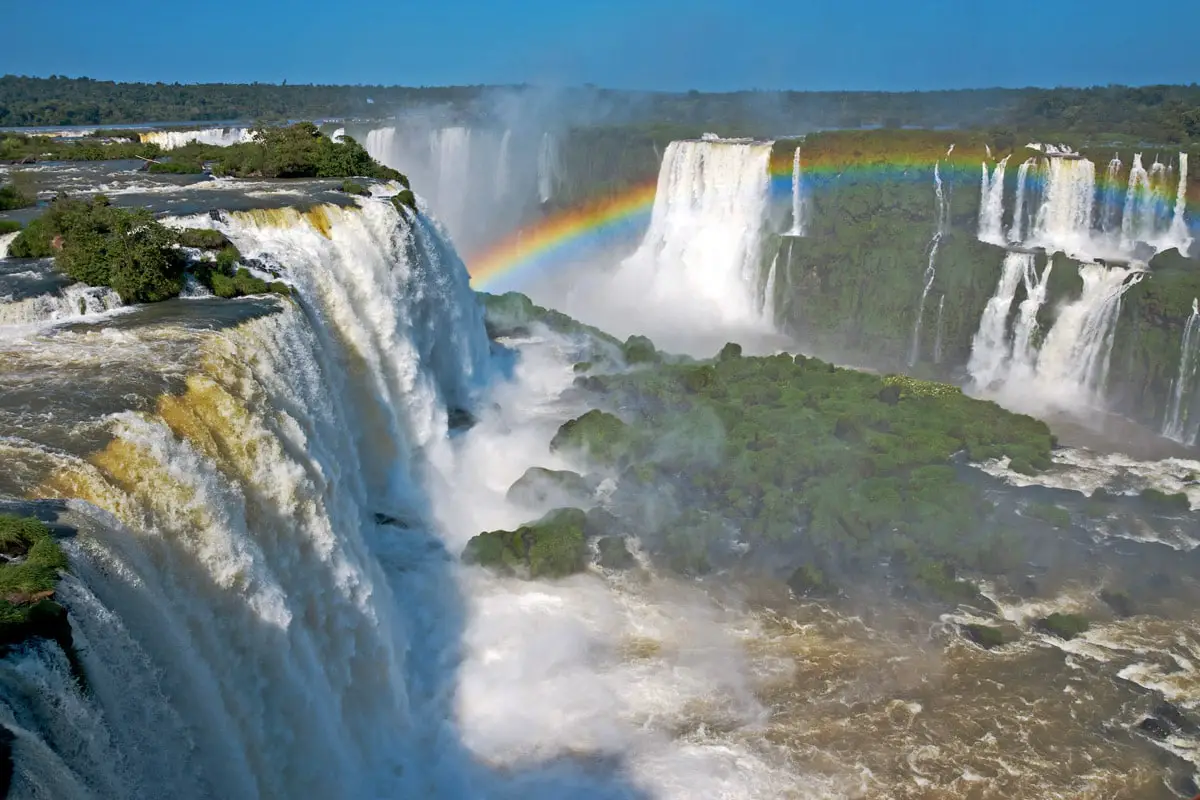
 In short
In short
One of the most spectacular natural landmarks in the world is Iguazu Falls. No figures and no words can describe the harmonious beauty of this waterfall. This could be the most magnificent waterfall in world.
 84.8%
84.8%
GPS coordinates
Location, address
Alternate names
UNESCO World Heritage status
Height
Drops
Width
Average annual flow
Stream
Map of the site
If you see this after your page is loaded completely, leafletJS files are missing.
 In detail
In detail
Iguazu – the boundary river
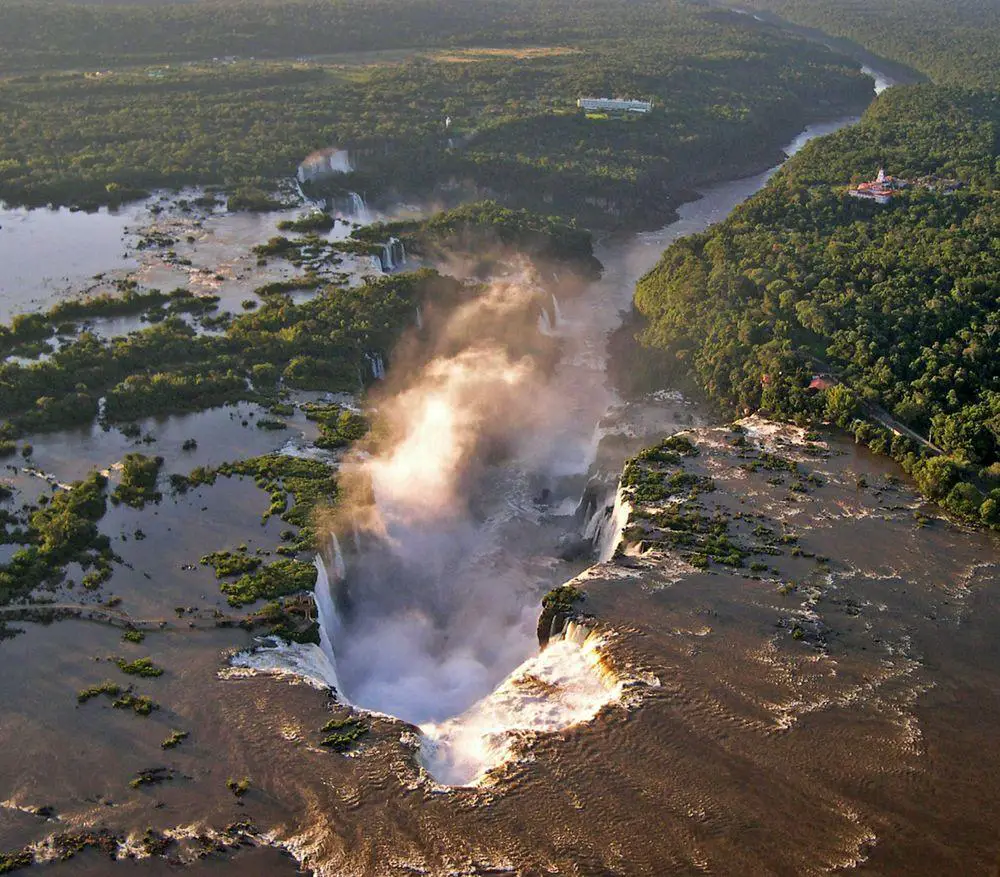
Iguazu is a 1,320 km long river, which starts near Curitiba in Brazil. The name of the river, most likely, was given by the speakers of Tupi or Guarani language, where "y" means water and "ûasú" – big.
The river meanders through Paraná plateau, collecting smaller and larger tributaries. Before the falls Iguazu is mighty, approximately 1 km wide river.
At the discharge of Rio San Antonio Iguazu starts to serve as the border of Brazil and Argentina. After 100 km it reaches the rim of Paraná plateau, where the waterfall has formed in a sharp bend of the river.
24 km after the waterfall Iguazu falls into Paraná. In this place meet three countries – Argentina, Brazil and Paraguay. After the falls Iguazu is 125 m wide, but at the mouth – 260 m wide.
Geology of Iguazu Falls
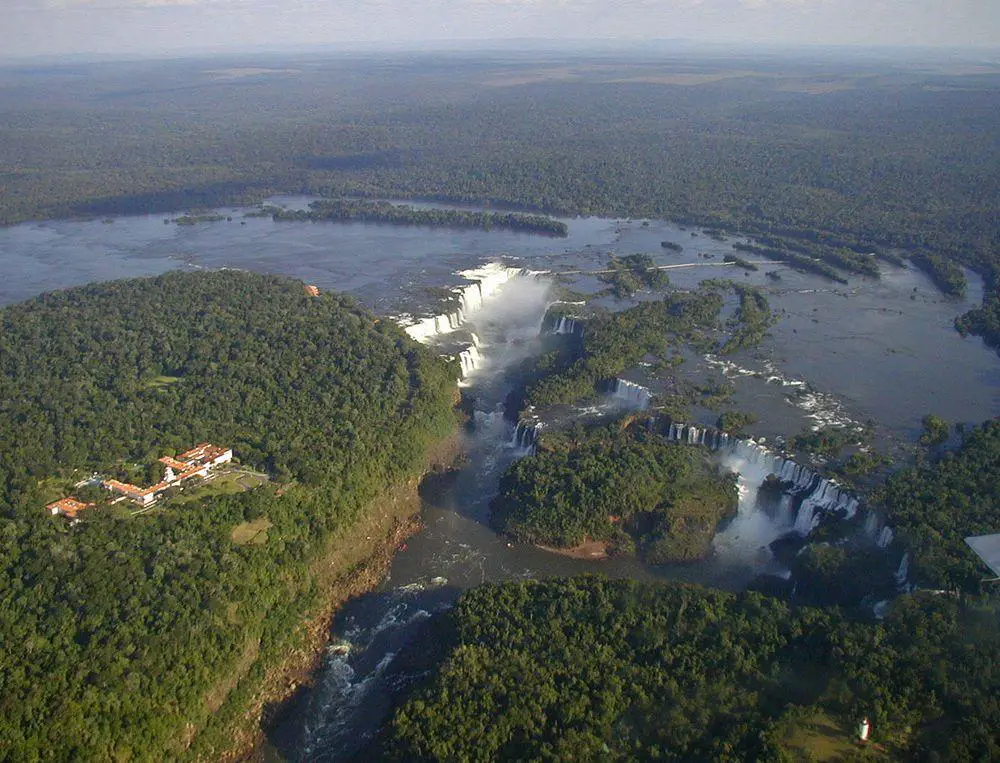
Iguazu Falls have formed on the rim of the basaltic Paraná Plateau, Serra Geral Formation. This volcanic plateau formed in Lower Cretaceous period some 132 million years ago in an enormous volcanic eruption. It is possible that this was the largest eruption in the history of the last several hundred million years.
On the rims of this plateau formed fhousands of waterfalls and impressive cliffs. Not too far (some 40 km) from Iguazu Falls were located Guaíra Falls (Sete Quedas) – the largest waterfall in the world by the volume of water. Unfortunately, it was flooded in 1978 under Itaipu Dam. Another example is the magnificent Canyon of Itaimbezinho with its fantastic waterfalls.
Description and figures
There are several ways to measure and rank waterfalls of the world – by the height, by the width, by the volume of water, by the height of the tallest vertical drop.
Iguazu Falls excel in width and volume.
Width
The width of falls is 2,682 m – this is the widest true waterfall (e.g. excluding those which look more like rapids) in the world.
The width of waterfalls is measured along the rim of the falling water. In the case of Iguazu, this by far is not a straight line: the direct distance between both sides of the waterfall is 1,140 m.
Volume
The average annual flow in falls is 1,746 m³/s. Among the true waterfalls of the world, it is one of the largest, maybe even second to Niagara (2,407 m³/s). Maximum recorded flow is 46,800 m³/s. It was reached in June 2014. To compare this: only the Amazon River has a higher average flow!
At low water the amount of water in the falls decreases significantly. Thus, in the summer of 2006, it was only 300 m³ per second.
Iguazu Falls are wider and more water-rich than the other big fall of the world – Victoria Falls, but does not have uninterrupted water curtain and is not that high. Although this can not be measured, Iguazu Falls seem to be somewhat more photogenic than Victoria Falls.
Height and steps
The height of different parts of Iguazu Falls fluctuates from 60 to 82 m. If compared to the tall waterfalls of the world, this might seem to be a rather low figure – but if we take into account the huge mass of water and width of falls – this is very impressive number!
The configuration of Iguazu walls is complex – in some places the water is falling from one vertical precipice but in some places, there have formed two well-expressed steps and many smaller steps.
Different parts of waterfall
The wildest part of Iguazu Falls is Devil’s Throat (Garganta del Diablo, Garganta do Diabo) – a unique, U-shaped, 700 m long and 150 m wide chasm – an uninterrupted wall of falling water. Approximately one half of the river flows through Devil’s Throat and the border of Brazil and Argentina goes through it.
In Brazil are located some 20% of the total width of falls – but from Brazil open wonderful sights towards Argentina.
Further to the west, behind the San Martin Island in Argentina are located other parts of Iguazu Falls – San Martin Falls, and Adán, Bossetti, Dos Hermanas, Alvar Nuñez, Bernabé Mendez, Mbigua, Chico, and Lanusse Falls. Some smaller cascades are penetrating also San Martin Island – Rivadavía and Escondido Falls. Each of them is beautiful.
No one can say the true number of separate falls. Some say that there are 275 falls but, depending on the water level their number fluctuates from 150 to 300.
Ecosystem and national parks
The beauty of the falls has helped to protect the surrounding forests.
Iguazu Falls are surrounded by subtropical rainforest of Alto Paraná Atlantic forest ecoregion. This ecosystem might be somewhat less diverse than the Amazon rainforest further north. An occasional visitor will not notice this because the diversity of nature here is amazing. In the surrounding forest grow more than 2000 species of vascular plants, here live jaguars, giant anteaters, ocelots, and caymans. Visitors are amazed by the incredible number and diversity of butterflies around the falls.
There is an advantageous competition between Brazil and Argentina about the conservation of natural values around Iguazu Falls. Each country has developed modern tourist infrastructure to manage the huge flow of visitors and – naturally, to earn from this.
Iguazu Falls in Brazil – Iguaçu National Park
Already in the 19th century, in 1876 there started a campaign in Brazil to protect the area around the waterfall. Gradually there was established a nature protected area. A national park was officially established in 1939.
In 1984 this park was included in the UNESCO World Heritage list. Now the area of the park is 1,700 km². The border of the park is easily seen on satellite images: a sharp, direct line between primeval tropical forest and agricultural fields and buildings.
Only 0.3% of the total park area is available to the main flow of visitors.
Iguazu Falls in Argentina – Iguazú National Park
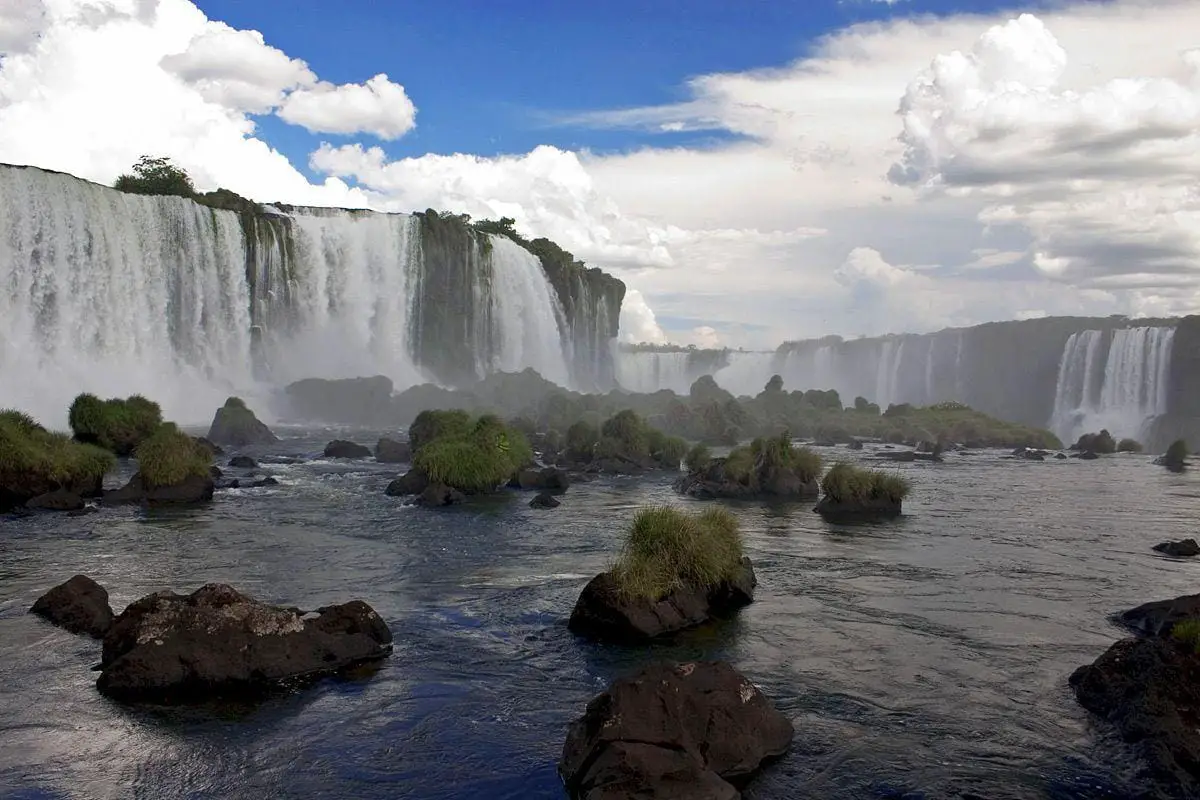
Iguazu Falls is a popular tourist destination since the end of the 19th century. In 1902 there started the first official activities to protect the area around the falls. The national park was established in 1934.
In 1987 this park was included in the extended UNESCO World Heritage monument. Today this park is 550 km² large – and, similar to the situation in Brazil, its borders divide primeval nature from intensely managed lands.
Although Argentina has most of the falls, the access from this country is more complex. An interesting solution to this problem is Paseo Garganta del Diablo – approximately 1 km long footpath across the river until the wild Devil’s Throat. This footpath is accessed with a romantic tourist train.
Legend
Local Guarani Indians tell the following legend about the creation of Iguazu Falls:
Guarani people sacrificed every year a beautiful virgin to the M’Boi – a Serpent God of the Iguazu River. Girls were bred to be sacrificed and people were used to this – no one objected.
Once lived a beautiful girl Naipí. She loved Tarobá – a warrior of the neighboring tribe.
Naipí walked along the Iguazu River and M’Boi saw her reflection in the water and fell in love with her. God demanded that Naipí should be sacrificed and the elders of her tribe were too frightened to object.
Tarobá and Naipí decided to escape with a canoe. Unfortunately, M’Boi noticed them and started to chase them. In spite of the agility of the Serpent God, Tarobá managed to keep ahead of him.
M’Boi became furious and split the earth in front of the canoe. The boat with two lovers fell down the spill of the river. Naipí was turned into a large rock. Tarobá survived the fall by jumping out of the boat before the falls. He saw the transformation of her beloved girl below the fall and rushed towards her… and was turned into a palm tree on the precipice.
Tarobá and Naipí were separated forever – but on sunny days (and clear nights) there is a rainbow from the palm tree to the rock.
References
- Iguazu, Cataratas del, World Waterfall Database. Accessed in 22.01.2012.
- Johhny T. Cheng. Iguazu Falls (Iguazú Falls, Iguassu Falls, Iguaçu Falls, or Yguazú Falls), World of Waterfalls. Accessed in 22.01.2012. Numerous images and videos.

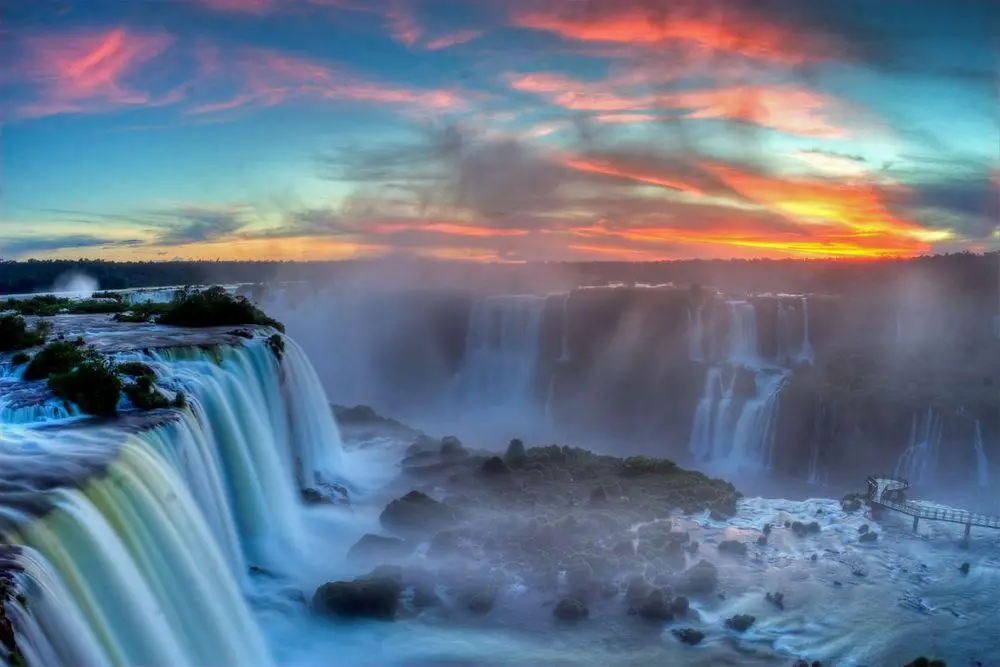
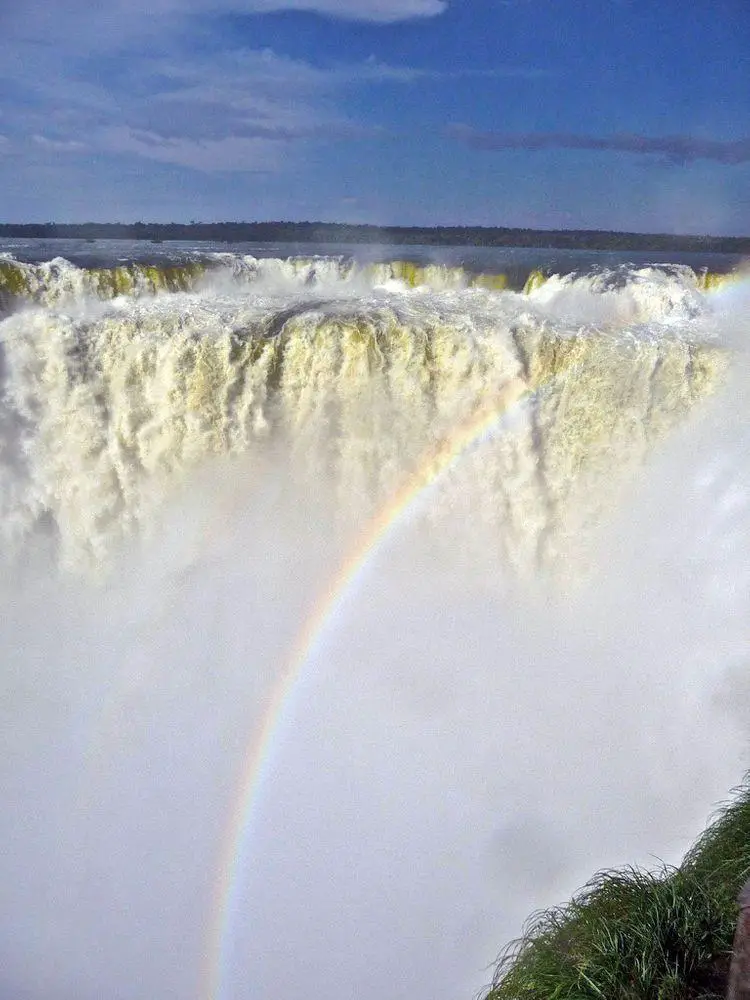
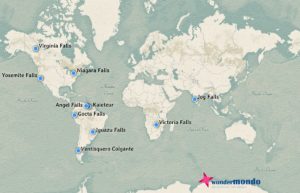
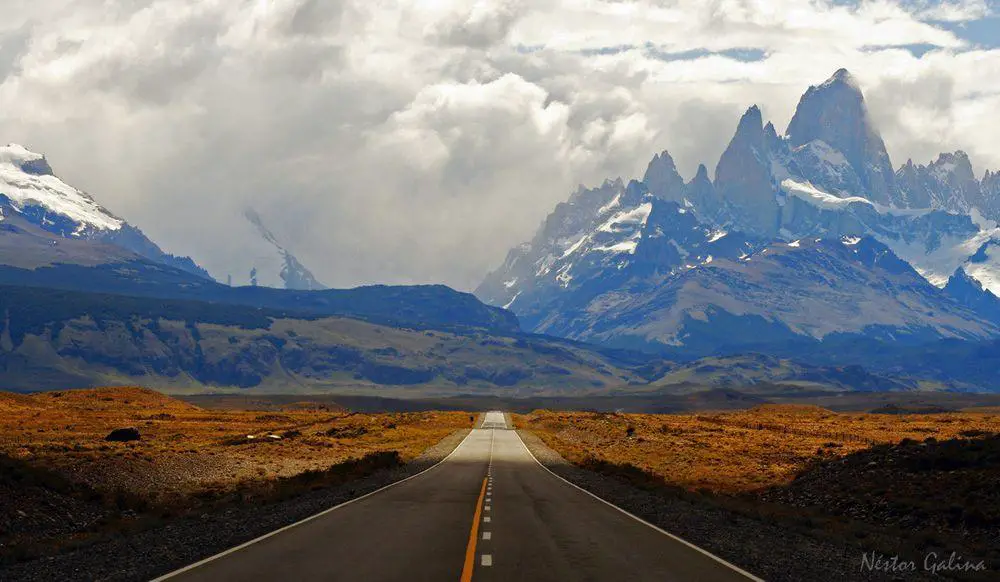
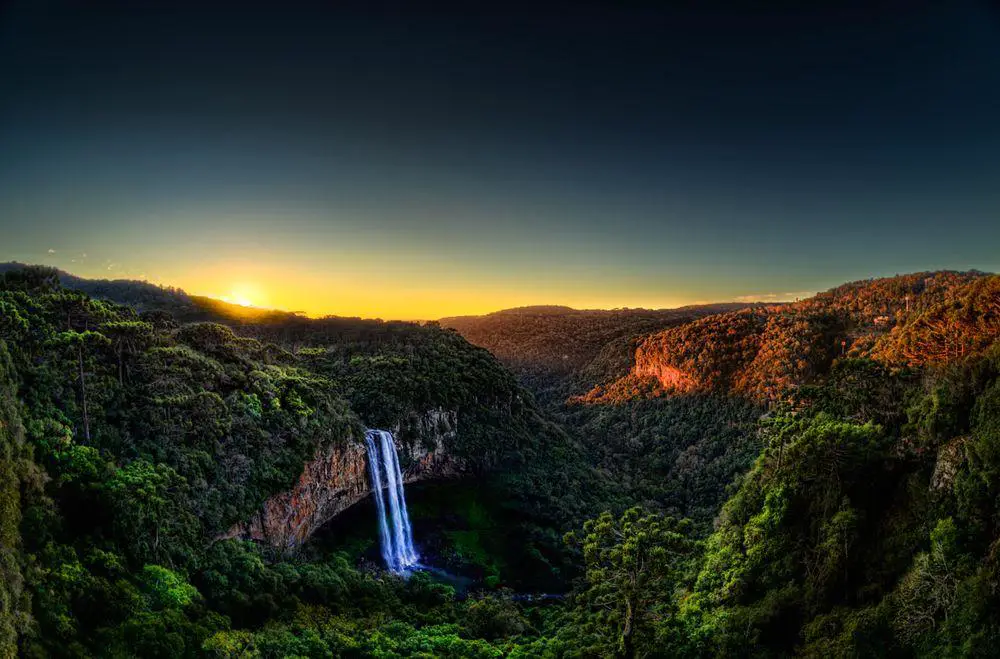
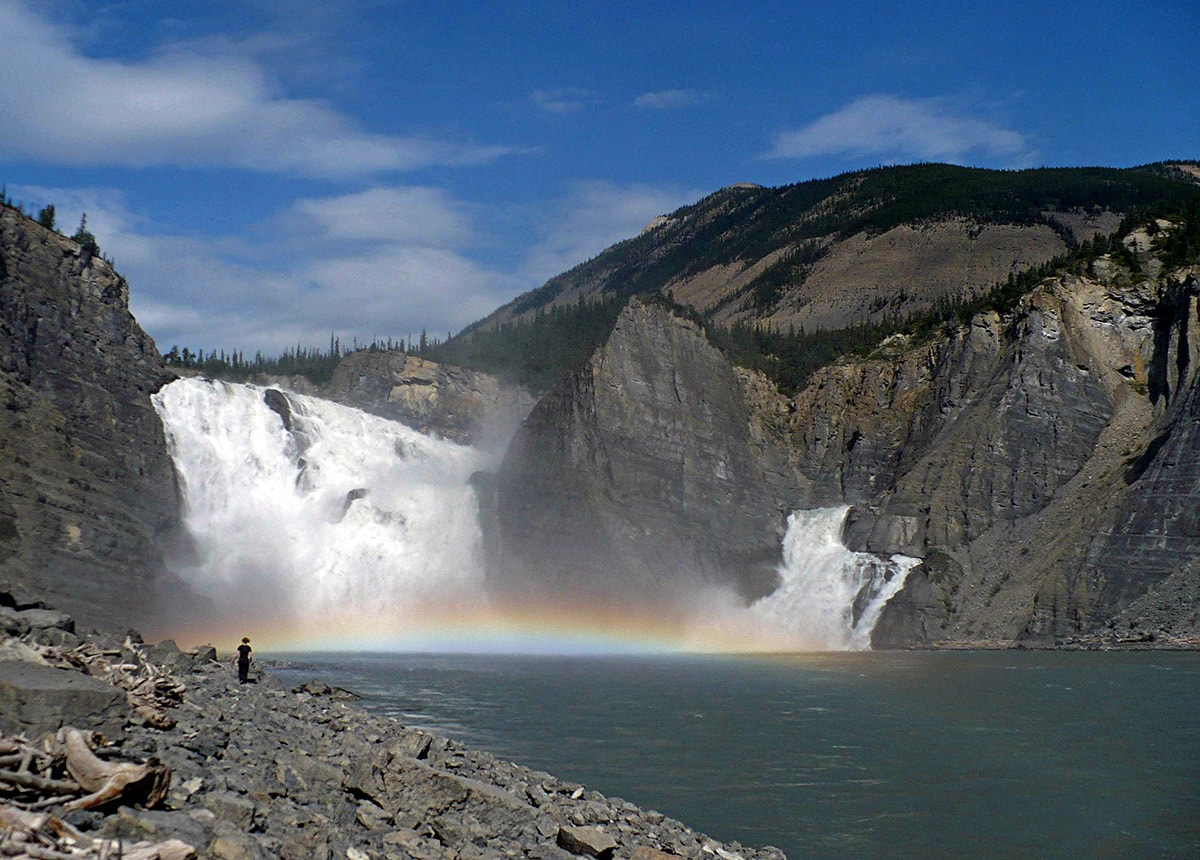


more pictures please